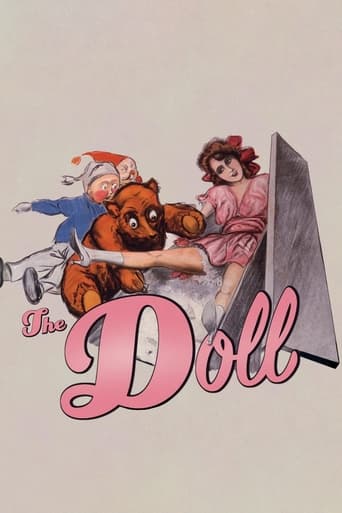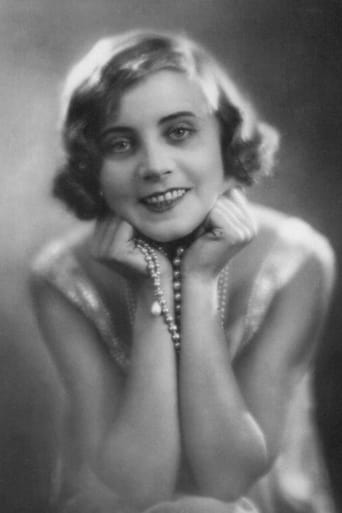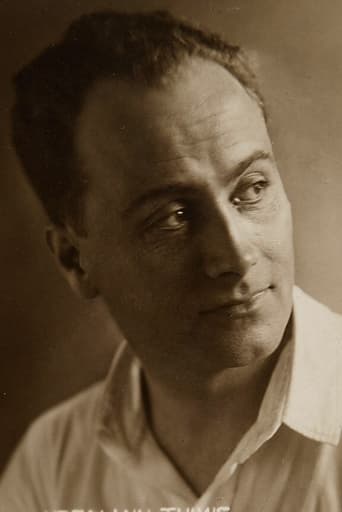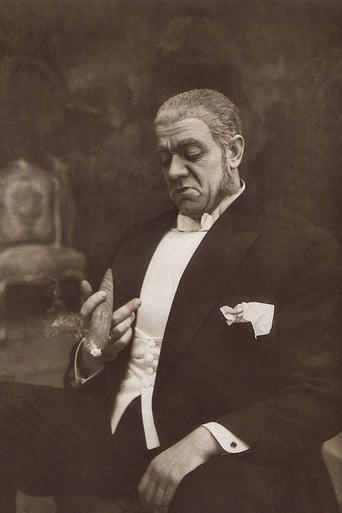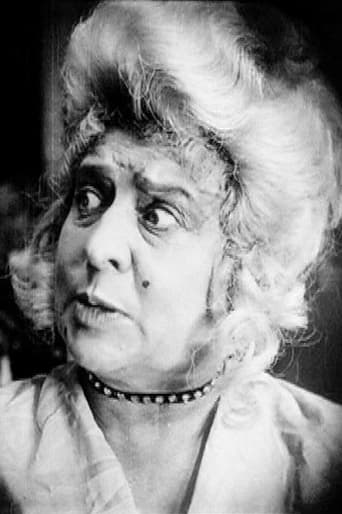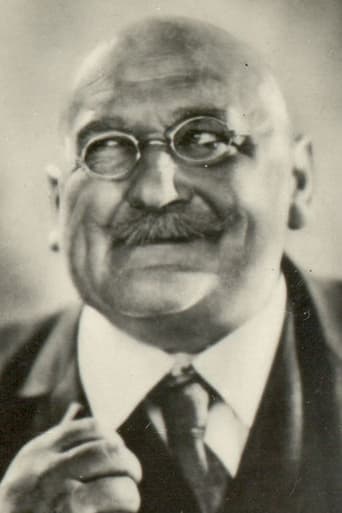Limerculer
A waste of 90 minutes of my life
Matrixiole
Simple and well acted, it has tension enough to knot the stomach.
Nayan Gough
A great movie, one of the best of this year. There was a bit of confusion at one point in the plot, but nothing serious.
Billy Ollie
Through painfully honest and emotional moments, the movie becomes irresistibly relatable
morrison-dylan-fan
Taking a look at the Masters of Cinema Ernst Lubitsch box set,I discovered that a new score had been done for Die Puppe which was exclusively done for the collection,which led to me taking the doll out of the box.The plot:Fearing that his nephew Lancelot will be the last person to keep the family name alive, Baron Von Chanterelle tells Lancelot that he must get married to one of the villagers .Announcing to villagers that he wants his nephew to get married,Lancelot runs away from the village & Chanterelle to a monastery.After staying at the monastery for a few days with the monks,Lancelot spots a notice in the paper from Chanterelle,which says that if Lancelot gets married,he will receive a large sum of cash.Stuck between wanting to get his hands on the cash,but not wanting to get married,the monks decide to solve Lancelot's troubles,by suggesting that he gets married to a mechanical doll.View on the film:Before I get to the movie,I have to mention the excellent transfer that Masters of Cinema have done for the title,with the new score by Bernard Wrigley really capturing the warped fairy tale atmosphere of the flick.Crossing the sex Comedy & Fantasy genres over in their loose adaptation of A.E. Willner's operetta,the screenplay by co- writer/(along with E.T.A. Hoffmann & Hanns Kräly) cameoing actor/ director Ernst Lubitsch strikes a superb balance between surprisingly kinky shades with charming flights of Fantasy,as Lancelot's attempts to pass the "doll" off as his wife,leads to Lancelot finding out that a woman can't be treated like a wind-up toy,whilst the title dips into the off- beat,as Lancelot tries to find the right button combo to make the doll do his bidding.Setting the mood with the opening of a pop-up picture book, Ernst Lubitsch and cinematographers Theodor Sparkuhl & Kurt Waschneck give the movie a delightful warped children's fairy tale book appearance,with monks,dance moves and growing/receding hair popping out of the screen.Along with the surreal splashes,Lubitsch also displays an expert eye in using different tints,with the rusty tint used for scenes with Lancelot and the "doll" giving the flick a metallic shine,whilst the monastery is covered in a worn-out green.Searching desperately for a solution to getting hold of Chanterelle's cash, Hermann Thimig gives a wonderful performance as Lancelot,with Thimig keeping Lancelot away from being a slime-ball,by showing a real sense of innocent surprise at Chanterelle's sudden demands.Given the challenge of impersonating a doll, Ossi Oswalda gives an extraordinary performance as Ossi,thanks to Oswalda revealing expert comic timing in Ossi's sudden "robotic" movements,whilst making sure that the eyes of Ossi remain lit up & soulful,as Lancelot soon discovers that this "doll" is a women not to be put back in the play box.
MartinHafer
This film was co-written and directed by the famed Ernst Lubitsch. However, unlike his famous films he made in Hollywood during the 1930s and 40s, this one is a silent and was made in his home country of Germany. Stylistically, it doesn't have the "Lubitsch touch" (the style and grace of his best films) but this doesn't mean it's a bad film. It's more of a kids' film--a silly story that has a strong Brothers Grimm undercurrent.The film begins in an interesting manner. Lubitsch himself walks out and begins assembling a children's play set and it magically becomes real as do the little wooden figures. This was clever and very unique.The story itself is pure fairy tale. A rich man wants his only nephew and heir to marry, but the young man is "timid". In today's world, he'd probably be seen as a homosexual or at least a misogynist. The young man runs away instead of marrying and goes to live with some morally suspect monks. The monks do nothing but eat like pigs and complain that they have no money. When they learn that this young man is an heir, they help him come up with a plan to get the money (and they assume he'll give it all to them). The young man can go to the doll maker, Mr. Hilarious, and buy one of his life-size and highly realistic dolls. Despite the dolls obviously not looking alive in the least, when the young man shows this doll to the uncle, the uncle is thrilled and the young man marries the doll. However, there's a big problem with his plan--something you'll just have to see for yourself.Overall, it's a very silly and fantastic film from start to finish. There's plenty for kids, but adults will also like the film because it never takes itself seriously and has many cute moments. While not a masterpiece, for an early Lubitsch film, it's a must-see and highly underrated on IMDbBy the way, the print from Kino Films is exceptionally good--one of the better prints from the pre-1920 era I have seen. Also included with this film is the documentary "Ernst Lubitsch in Berlin".
boblipton
People speak of the Lubitsch Touch first showing up in THE OYSTER PRINCESS, but that movie always struck me me as a a good romantic comedy, dimmed by changes in fashion, creaking a bit in age.But this movie is the real thing: a silly story told with much flair and constant surprises. It begins with Lubitsch showing you a model of the set, like Penn and Teller showing you how they do the cup-and-ball trick, followed by a show that dazzles you: pantomime horses, venal monks and a little bit of E.T.A. Hoffman all fall under the thrall of Lubitsch and all of them, and the audience too, end up with smiles on their faces.This movie is too good to more than hint at its wonders. If you have never seen a silent feature, see this one.
Kalaman
"Die Puppe" aka "The Doll" ranks with "The Oyster Princess" as perhaps Lubitsch's most sublime film made during his German period. Both films are superior in many respects to the well-known but pallid historical drama, "Madame duBarry" aka "Passion" (also made in 1919). Lubitsch himself felt that way. In a letter he once submitted to his biographer Herman G. Weinberg, Lubitsch considered "Die Puppe" and "Oyster Princess" as his most outstanding comedies produced in Germany before he departed for Hollywood to make "Rosita".An early, entrancing example of what Lubitsch would become years later, "Die Puppe" is a supremely funny and delightful silent burlesque, filled with the master's light, witty, and graceful touch. The setting is frothy and artificial and it anticipates Lubitsch's enchanting fairy tale musicals of the sound era."Die Puppe" is introduced by Lubitsch himself with an artificial cardboard. It is a fairy tale about of a young prince named Lancelot(Hermann Thimig) who flees from his uncle Baron von Chanterelle(Max Kronert) to avoid a marriage. He settles in a monastery. There, he meets several monks who persuade him to marry a human-like mechanical doll and give them his uncle's dowry. The doll-maker Hilarius (Victor Janson) agrees to Lancelot's interest in his newest doll, an exact replica of Hilarius' daughter Ossi (played by Ossi Oswalda herself). But there is a problem: The doll-maker's young apprentice (Gerhard Ritterband) accidentally breaks the arm of the doll and now it is up to Hilarius' daughter Ossi to impersonate the doll in order to cover it up. Lancelot takes the doll/Ossi to his uncle's castle, where some of Lubitsch's most inventive gags occur as Lancelot mistakes real Ossi for the doll. He actually falls in love with the doll/Ossi. And the wedding scenes alone are some of the funniest moments ever filmed.
If you are a fan of Lubitsch, "Die Puppe" is an essential viewing.
